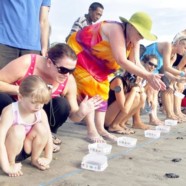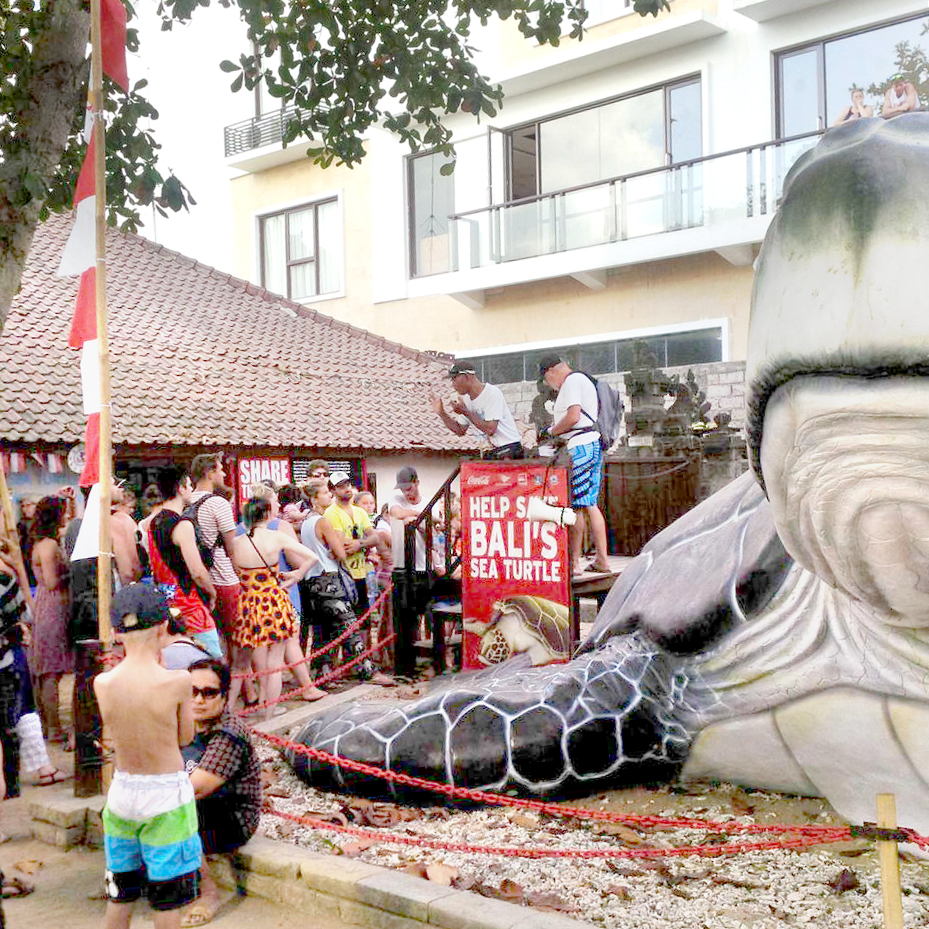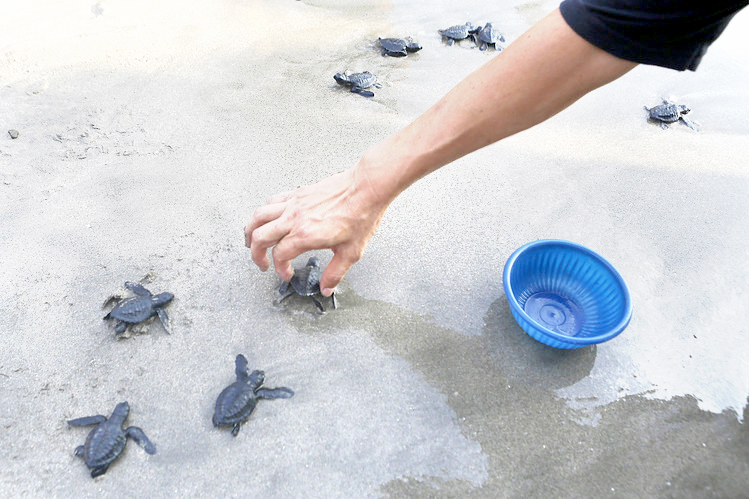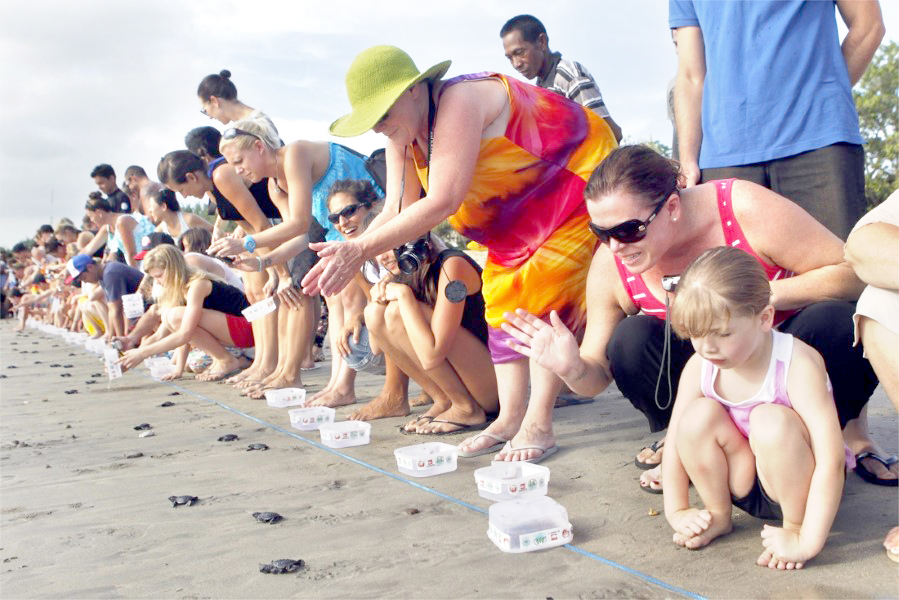Save Bali Turtles
In Bali, an Effort to Save Indonesia’s Turtles Grows.
In the late afternoon sun, hundreds of baby turtles, barely the size of a golf ball, scurried across one of Bali’s most popular beaches and made their way to freedom.
Hundreds of tourists lined the beach, watching the tiny creatures scramble to the water. Leading the crowd in cheering them on was I Gusti Ngurah Tresna, who directs the daily event and is known here as Mr. Turtle.
Mr. Turtle is part of the Bali Sea Turtle Society, a small group of Balinese activists helping protect endangered sea turtles by patrolling beaches at night and retrieving their newly laid eggs before poachers can steal them.
Turtle eggs are coveted by poachers across much of Indonesia, and turtle meat is seen as a delicacy by many Balinese. The construction of tourist hotels along Bali beaches where turtles lay their eggs has put added pressure on the animals.
Six sea turtle species – all of them listed as vulnerable or endangered – are native to Indonesia. But today it is mainly just the Olive Ridley that returns to Bali to lay its eggs.
A non-profit turtle rescue and education organization, the Bali Sea Turtle Society has been operating since 2001. It operates a small hatchery at Kuta Beach, where it invites visitors to help release baby turtles during the breeding season, May through September.
On many afternoons, hundreds of tourists and a few locals line up along Kuta’s sands, each with a hatchling to release in a race to the water.
This year, the society expects to release more than 24,000 baby turtles – a record number for the team of three staff members and 10 volunteers, said I Wayan Wiradnyana, the society’s founder and chairman.
The Bali Sea Turtle Society began 13 years ago with the recovery of one nest, said Mr. Wiradnyana. Each year, the number of nests and eggs recovered has increased. This year, the society has already surpassed the 28,000 eggs recovered last year. When found quickly and handled properly, as many as 90% of the eggs hatch, he said.
But the increase in the number of eggs does not necessarily mean the Olive Ridley is recovering, said Mr. Wiradnyana. The society keeps expanding the number of beaches it patrols and people increasingly call to report sightings of turtles laying their eggs.
“More and more people are aware,” he said.
It takes about 50 days for the eggs to hatch. When the babies begin hatching, the team places them in plastic tubs for release the next afternoon. Genetically programmed to head to sea as soon as they emerge from their shells, the hatchlings continually climb over each other and push against the sides of the tubs in their quest to reach water.
Some conservation centers in Bali charge up to 100,000 rupiah ($8) to release a single hatchling, but the Bali Sea Turtle Society invites visitors to release their hatchlings for free. The shoestring operation survives on donations.
Mr. Turtle leads the release, first giving a brief talk about the need to help the species survive. He notes that of every 1,000 hatchlings, only one is likely to survive to maturity. The ones that make it, he points out, won’t return to Kuta Beach to lay their eggs for 25 years.
Source: Richard C Paddock / blog.wsj.com
=========================




